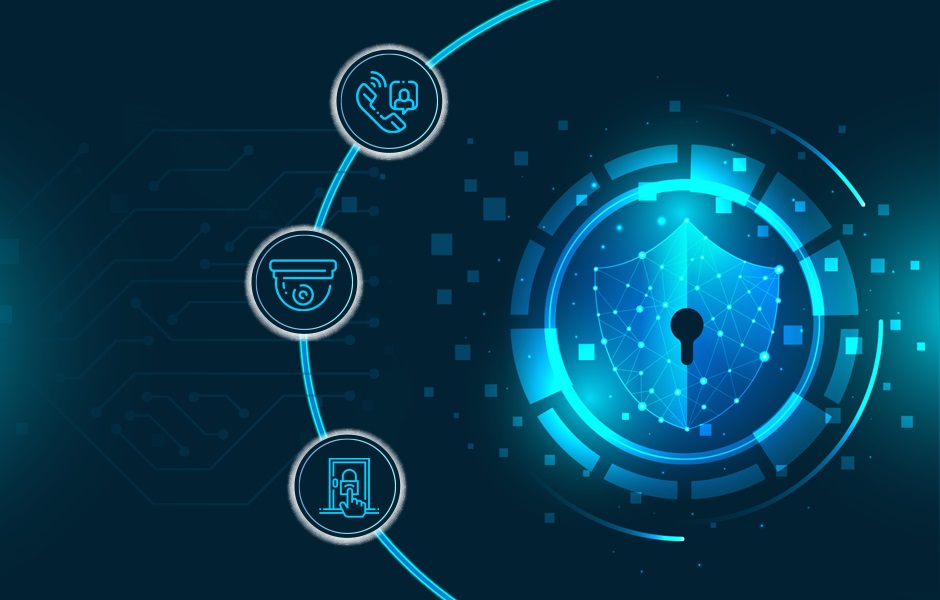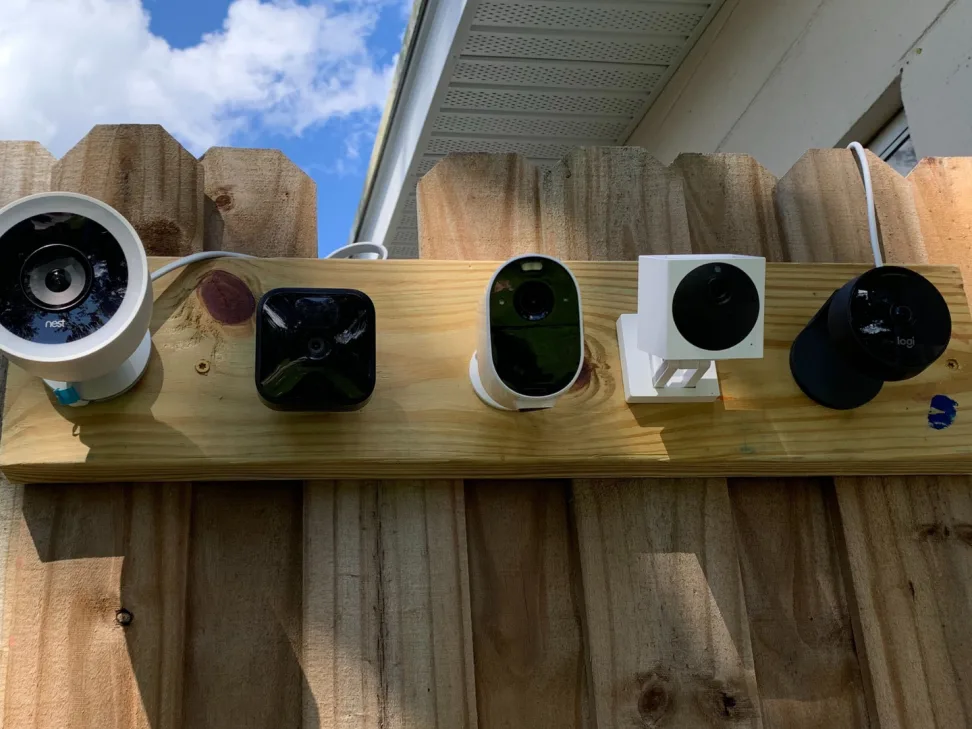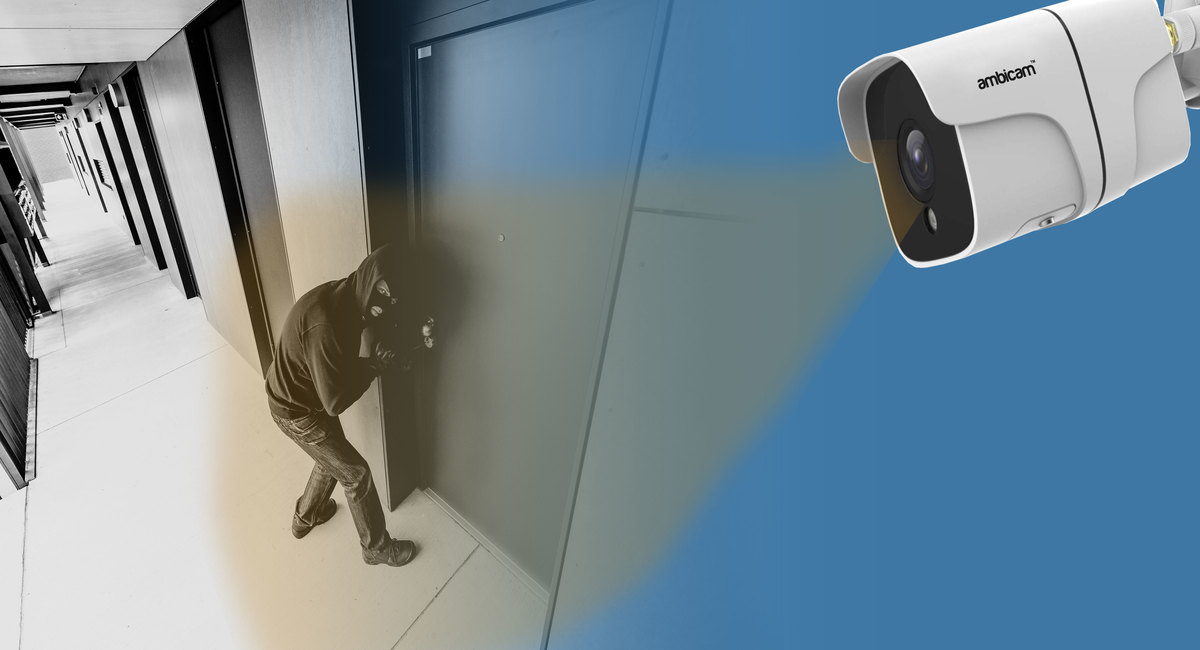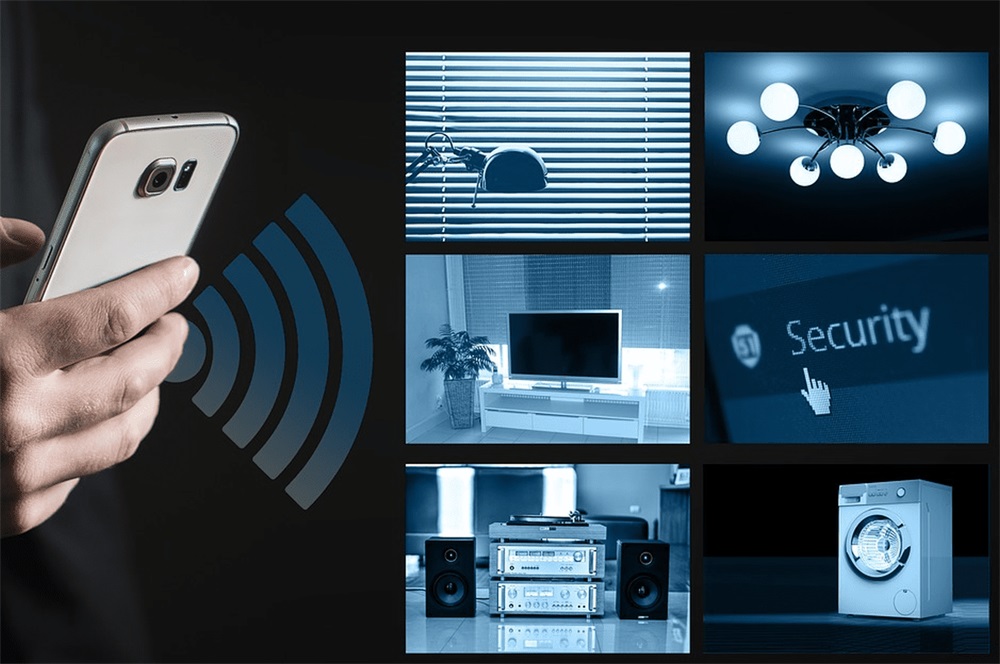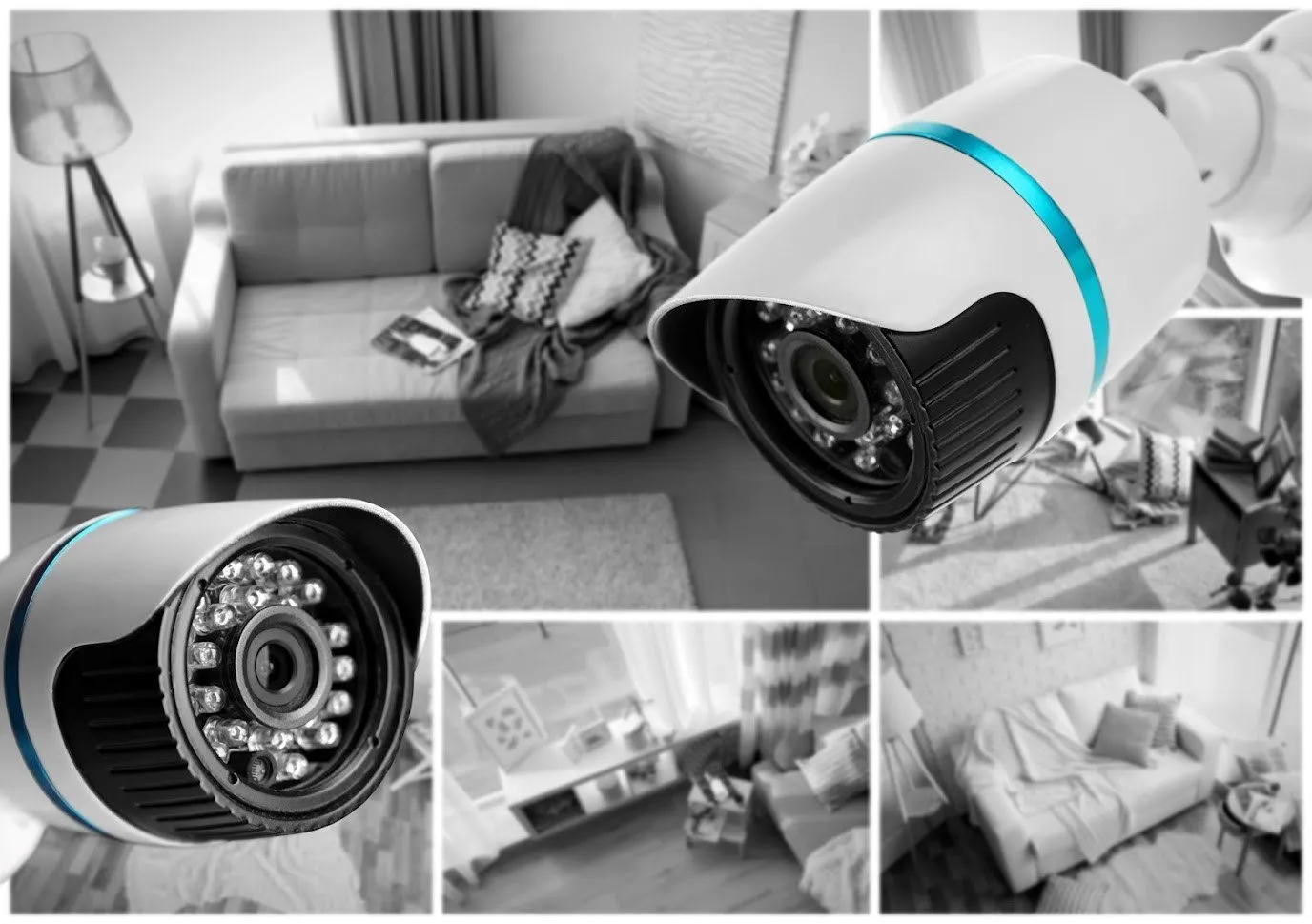Contents
- 1 The Importance of Security System Integration
- 2 Benefits of Security System Integration
- 3 Types of Security Systems that can be Integrated
- 4 Challenges to Security System Integration
- 5 Best Practices for Successful Security System Integration
- 6 Case Studies on Successful Security System Integration Projects
- 7 Future Trends in Security System Integration
- 8 Conclusion
- 9 Conclusion
The Importance of Security System Integration
A Brief Explanation of Security System Integration
Imagine if every security system in your building worked independently, without any communication or coordination between them. In this scenario, if an intruder were to break into the building, the access control system would sound an alarm and lock down all doors. But what about the video surveillance system?
Would it be able to track the intruder’s movements to help identify them later? Without integration between security systems, you run the risk of leaving gaps in your security that can leave you vulnerable.
Security system integration involves connecting different security systems within a building or facility so they can communicate and work together seamlessly. By integrating these systems, you can have a more comprehensive and efficient approach to managing security in your space.
The Importance of Security System Integration in Today’s World
In today’s world, threats to our safety and security are becoming increasingly complex and sophisticated. From cyber attacks on businesses to violent incidents in public spaces, there is a need for comprehensive security measures that can keep us safe.
This is where security system integration comes into play. By integrating different systems such as access control, video surveillance, intrusion detection, and fire alarms into a single platform or dashboard that can be monitored from one location, you gain greater insight into potential risks and threats as well as increased effectiveness in response times.
This means you can quickly detect potential incidents before they escalate or respond more efficiently when they do occur. Furthermore, with remote access capabilities offered by many integrated systems today, it’s possible for authorized personnel to monitor and manage their facilities’ safety from virtually anywhere with internet access.
This is especially valuable for organizations with multiple locations. In recent years we have seen a dramatic increase in mass shootings at schools and other public spaces around the world.
The importance of providing advanced protection against such threats cannot be understated. Security system integration can provide this protection by giving security personnel the necessary tools to respond quickly and effectively in moments of crisis.
Security system integration is becoming an essential tool to protect against growing safety and security risks in today’s world. It offers a range of benefits that can help you manage your facility’s safety more effectively and provide greater peace of mind.
Benefits of Security System Integration
Increased efficiency and effectiveness
Integrating security systems can greatly enhance the efficiency and effectiveness of a security program. By integrating different systems, such as access control and video surveillance, security personnel can quickly identify and respond to potential threats. For example, if an unauthorized person gains access to a restricted area, the integrated system could trigger an alert and send a notification to authorities in real-time.
This can help prevent incidents from occurring and reduce response times if an incident does occur. In addition to preventing incidents from occurring, integration also allows for more efficient incident management.
For example, if a fire alarm is triggered in a building with an integrated system, the alarm could automatically trigger video surveillance cameras to capture footage of the area where the fire is detected. This footage could then be used by emergency responders to quickly assess the situation before entering the building.
Cost savings through centralized management
Integrating security systems can also lead to cost savings through centralized management. Instead of having separate systems for each type of security measure (such as access control or video surveillance), all systems can be managed centrally from one location. This reduces costs associated with maintenance, updates, and repairs.
Centralized management also means that fewer personnel are needed to manage multiple systems across multiple locations. Instead, one team can manage all aspects of security across different sites using one central interface.
Enhanced safety and security measures
Integrating different types of security systems leads to enhanced safety and security measures overall. With a comprehensive system in place that includes access control, video surveillance, intrusion detection and fire alarms among other things it allows for more complete coverage over any premises or location. For instance individuals attempting entry onto premises without proper clearance will instantly trigger alerts within integrated access control systems enabling prompt action being taken before any potential threat develops further.
Similarly, with the integration of fire alarms and sensors, a rapid response can be implemented in case any potential fires are detected within the premises. Overall, integrating security systems leads to an altogether more effective and efficient security program with cost savings and enhanced safety measures.
Types of Security Systems that can be Integrated
Access Control Systems
Access control systems are an essential component of any security system. An access control system is designed to restrict access to a particular area or resource. Generally, these systems consist of an electronic locking mechanism and a device such as a fingerprint scanner or keycard reader that verifies the identity of the person attempting to gain entry.
When integrated with other security systems, access control becomes even more powerful. By integrating with video surveillance systems, for example, it’s possible to monitor who is coming and going from secure areas and to capture footage of any unauthorized attempts to gain entry.
Video Surveillance Systems
Video surveillance systems have become increasingly common in recent years as the cost of cameras and storage has declined. These systems consist of cameras installed in various locations around a facility that record video footage 24/7.
When integrated with other security systems such as access control or intrusion detection, video surveillance becomes even more effective. For example, if an intrusion detection system triggers an alarm indicating unauthorized activity in a particular area, video surveillance can be used to verify the threat and provide additional information about the individuals involved.
Intrusion Detection Systems
Intrusion detection systems are designed to detect when someone is attempting to gain unauthorized access to a facility or area within a facility. These systems use sensors such as motion detectors or door contacts to alert security personnel when there is activity in restricted areas outside of normal business hours.
When integrated with other security systems such as access control or video surveillance, intrusion detection becomes even more powerful. For example, if an intrusion detection system indicates that someone has gained unauthorized access through a door after hours, video surveillance can be used to determine who they are and what they’re doing on site.
Fire Alarm Systems
Fire alarm systems are designed to detect the presence of fire or smoke in a facility and to alert occupants of the danger. These systems include detectors such as smoke detectors or heat sensors that trigger an alarm when conditions warrant.
When integrated with other security systems such as access control or video surveillance, fire alarm systems become even more valuable. For example, if a fire alarm is triggered in the middle of the night, video surveillance can be used to monitor the situation and ensure that everyone has safely evacuated the building.
Other Types of Security Systems
While access control, video surveillance, intrusion detection, and fire alarm systems are among the most commonly integrated security systems, there are many other types of security systems that can be integrated as well. Some examples include:
– Perimeter security systems designed to detect unauthorized access at property boundaries – Asset tracking and management systems for monitoring high-value items
– Environmental monitoring systems for detecting changes in temperature or humidity By integrating multiple types of security systems together, it’s possible to create a comprehensive security solution that provides maximum protection for your facility.
Challenges to Security System Integration
Compatibility Issues between Different Systems
One of the biggest challenges in security system integration is compatibility issues between different systems. Many organizations have a variety of different security systems that they’ve implemented over time, and getting them all to work together can be a real challenge. Different systems may use different protocols or even different languages to communicate, which can cause problems when trying to integrate them.
To overcome these compatibility issues, it’s often necessary to implement middleware or other software solutions that can act as translators between the different systems. This can be costly and time-consuming, but it’s often the only way to get disparate systems working together.
Lack of Standardization in the Industry
Another challenge in security system integration is the lack of standardization within the industry. There are many different vendors and manufacturers offering a wide range of products and services, each with their own proprietary protocols and interfaces. This makes it difficult for organizations to create a cohesive security strategy that spans multiple systems.
To address this challenge, some industry groups are working on developing standards for security system integration. These standards would help ensure interoperability between different systems from different vendors, making it easier for organizations to implement integrated security solutions.
The Importance of Vendor Relationships
Given the challenges with compatibility and standardization in the industry, it’s important for organizations to carefully consider their relationships with vendors when implementing integrated security solutions. Organizations should look for vendors that have experience integrating multiple types of security systems, as well as expertise in middleware and other software solutions. Additionally, organizations should look for vendors that are committed to ongoing support and maintenance.
With so many disparate systems involved in an integrated solution, there will almost certainly be issues that arise over time. Having a strong relationship with vendors is critical for resolving these issues quickly and effectively.
The Need for Thorough Testing and Evaluation
When implementing an integrated security solution, it’s important to thoroughly test and evaluate the system before deploying it in a production environment. This includes testing for compatibility between different systems, as well as evaluating the overall effectiveness of the integrated solution.
Testing should include both functional testing (i.e., ensuring that all systems are communicating properly) and performance testing (i.e., measuring how well the integrated solution performs under different conditions). Thorough testing can help identify issues early on, before they become major problems.
The Ongoing Challenge of Maintenance and Upgrades
It’s important to recognize that implementing an integrated security solution is not a one-time event. Just as with any other type of system or technology, ongoing maintenance and upgrades will be necessary to ensure that the system continues to operate effectively over time. This can include software updates, hardware upgrades, and other types of maintenance activities.
Organizations should plan ahead for these ongoing maintenance needs and work closely with vendors to ensure that they have access to the resources they need to keep their integrated security solutions up-to-date. By staying proactive about maintenance and upgrades, organizations can ensure that their security systems continue to provide value over the long term.
Best Practices for Successful Security System Integration
Conducting a Thorough Needs Assessment Before Implementation
Before implementing any security system integration, it is important to assess the needs of your organization thoroughly. This assessment should include an analysis of the current security systems in place and any potential issues or gaps that need to be addressed.
It is also essential to identify the specific goals and objectives you hope to achieve through the integration process. One key consideration during this needs assessment is identifying which security systems are critical to your organization’s operations.
For example, if you are a healthcare facility, access control and video surveillance systems may be crucial components of your overall security plan. Another important factor to consider during this assessment is determining whether there are any compliance requirements or regulations that must be met through the implementation of new security measures.
Choosing the Right Integrator with Experience and Expertise
Choosing the right integrator with experience and expertise is another critical step in ensuring a successful security system integration. When selecting an integrator, it is important to consider factors such as their track record of successful integrations, their level of expertise with different types of security systems, and their ability to work within your budget constraints.
It may also be helpful to seek out recommendations from other organizations within your industry who have undergone similar integration projects. Additionally, research potential integrators thoroughly by reviewing their credentials, certifications, and client reviews.
Ensuring Compatibility Between Different Systems
Ensuring compatibility between different systems can be one of the biggest challenges in implementing a successful security system integration project. To address this challenge effectively, it is essential to carefully evaluate which systems will need to integrate with one another before beginning implementation.
During this evaluation phase, it may be helpful to work closely with both software vendors and hardware manufacturers involved in your project. Integrators can also play a key role in addressing compatibility issues by leveraging their expertise and experience in working with different security systems.
It is also important to plan for ongoing maintenance and updates to ensure continued compatibility between your various security systems over time. By regularly monitoring system performance and addressing any issues promptly, you can avoid more significant problems down the line.
Conclusion: Successful Security System Integration is Within Reach
By following these best practices for successful security system integration, organizations can achieve enhanced safety and security measures, increased efficiency, and cost savings through centralized management. With careful planning, effective integrator selection, and a focus on ensuring compatibility between different systems, organizations can unlock the full potential of their security investments.
Case Studies on Successful Security System Integration Projects
Examples from the Healthcare Industry
One example of successful security system integration in the healthcare industry comes from St. Luke’s University Health Network in Pennsylvania. They integrated their nurse call system with their infant abduction alarm system to improve response times in case of an emergency.
The nurse call system sends a notification to staff members’ smartphones when an alarm is triggered, allowing them to respond quickly and efficiently. Another example is Providence Health & Services, a large healthcare network in the Pacific Northwest.
They integrated their access control and video surveillance systems to improve patient safety and protect against theft and vandalism. By monitoring high-risk areas like emergency rooms and pharmacies, they were able to identify potential security threats and take action before any harm was done.
Examples from the Education Industry
In the education industry, one example of successful security system integration comes from Clark County School District in Nevada. They integrated their access control, video surveillance, and intercom systems to create a comprehensive security solution for their schools.
The new system allows school administrators to monitor who enters and exits buildings, as well as communicate with students and staff during emergencies. Another example is the University of California at Santa Cruz (UCSC).
They recently upgraded their campus-wide security system by integrating their access control and video surveillance systems. This allows them to quickly identify potential safety threats on campus and take proactive measures before incidents occur.
Examples from the Retail Industry
In the retail industry, Target is a prime example of successful security system integration. After suffering a data breach in 2014 that affected millions of customers’ credit card information, they invested heavily in upgrading their security systems. They integrated multiple systems including access control, video surveillance, intrusion detection, fire alarm systems and more across all stores nationwide.
Another example comes from Walmart; they recently introduced a new system called “Missed Scan Detection” that uses video surveillance and machine learning to identify potential theft at checkout. By integrating these systems, Walmart has been able to decrease losses due to theft and improve overall store security.
Conclusion
These case studies demonstrate the importance of security system integration in various industries. By combining different systems, organizations can create a comprehensive security solution that improves efficiency, saves money, and enhances safety measures.
These success stories also highlight the importance of choosing the right integrator with experience and expertise to ensure compatibility between different systems. As technology continues to advance, we can expect to see even more innovative approaches to security system integration in the future.
Future Trends in Security System Integration
Advancements in technology and automation
As technology continues to evolve and improve, the security industry is bound to follow suit. One major trend we can expect to see is the increased use of automation in security systems.
Automated detection and response systems are becoming increasingly popular, which means that security professionals will be able to focus on more strategic tasks rather than being bogged down with routine maintenance tasks. Another area where we can expect to see technological advancements is in surveillance cameras.
High-definition cameras with advanced zoom capabilities are already popular, but we can expect even more sophisticated camera technology in the future. This includes panoramic views, facial recognition software, and night vision capabilities.
We should also expect greater integration between security systems and other smart technologies such as home automation systems. This means that homeowners will be able to control all their smart devices from a single interface for a more streamlined experience.
Increased importance of cybersecurity
One of the biggest trends affecting the security industry is the growing importance of cybersecurity. As more and more devices become connected to each other through the internet of things (IoT), there are more opportunities for hackers to gain access to sensitive information.
This means that cybersecurity will need to be a top priority for all businesses that rely on security systems. Companies will need to invest heavily in cybersecurity measures such as encryption, firewalls, and intrusion detection software.
They will also need to train their employees on how to identify potential cyber threats so they can take preventative action before any damage is done. In addition, governmental regulations around data protection are becoming stricter all over the world.
Companies must ensure compliance with these regulations or face hefty penalties if they fail. Another trend driving increased importance on cybersecurity is artificial intelligence (AI) powered attacks.
Hackers have begun using AI algorithms that can bypass traditional cybersecurity measures by learning how they operate. This means that cybersecurity professionals must stay ahead of the game by continuously updating their systems to counter any emerging threats.
Conclusion
Security system integration is becoming increasingly important in today’s world. Companies are investing heavily in this area to ensure that their assets and employees are protected from harm. As technology continues to evolve, we can expect to see more sophisticated security systems with increased automation and smarter capabilities.
At the same time, cybersecurity will be a primary concern for all businesses as they look to protect their sensitive information from cyber criminals. By staying up-to-date with these trends and implementing best practices for security system integration and cybersecurity measures, businesses can rest assured that they are providing the utmost protection for their employees and assets.
Conclusion
Recap of the importance and benefits of security system integration
In today’s world, security is more important than ever before. With so many potential threats and risks to consider, it is essential for businesses and organizations to have a comprehensive and effective security strategy in place.
One important aspect of this strategy is security system integration. We have discussed the many benefits of security system integration throughout this article.
By integrating different security systems into a single platform, businesses can increase efficiency and effectiveness, save money through centralized management, and enhance safety and security measures. This can provide significant value to businesses of all types and sizes.
Final thoughts on the future outlook for this field
Looking ahead to the future, it is clear that security system integration will continue to play a critical role in ensuring the safety and protection of people, property, and assets across a wide range of industries. As technology continues to advance at a rapid pace, there are sure to be new tools and solutions that emerge which will make it even easier for businesses to integrate their various security systems into a seamless whole. One promising area where we are likely to see continued growth is in the use of automation technologies such as artificial intelligence (AI) or machine learning (ML).
These tools can help businesses identify potential threats more quickly by analyzing data from multiple sources simultaneously. This could lead to faster response times when dealing with emergency situations or other types of incidents.
Overall, while there are certainly challenges associated with integrating different security systems together, there is no doubt that the benefits far outweigh any potential drawbacks. By taking a proactive approach to their security strategies through careful planning, assessment, and implementation of advanced technologies like those discussed here today – organizations can ensure that they are well-positioned for success both now and into the future!

